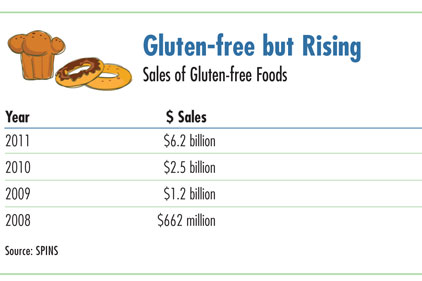As the report notes, “Additionally, growth in the marketplace is also expected to stem from the increasing preference for wheat-free and gluten-free diets, advancements in diagnosis of allergies, improved labeling regulations, and also through the launch of innovative and appetizing products.”
Strong potential rests in lactose-free products, the report finds. Nearly 50 million Americans may be lactose intolerant, largely those of African and Asian descent, but also Native Americans.
However, the most persistent formulation improvements have been in the area of gluten-free products, the report finds. “The quality and taste of gluten-free products has improved drastically over the years, taking away from the dry, crumbly, cardboard-textured rice bread and rice cakes...Consumers now have a variety of options to choose in the baked products category, including baking mixes, ready-to-eat, or flours and starches. Today, the market is flooded with an assortment of gluten-free bakery products, such as breads, bagels, muffins, entrees, cakes, cookies, doughnuts, baking mixes, pastas, pizza, side dishes, cereals, snack foods and soups.” pf

|
